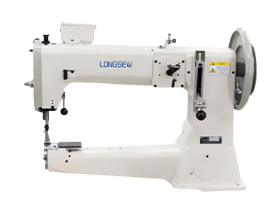Beginner's Guide to Choosing the Best Leather Sewing Machine for Easy Projects
A Beginner's Guide to Leather Sewing Machines
Sewing leather can be a rewarding hobby or a profitable venture, but it can also seem daunting for beginners. One of the most important tools you'll need is a leather sewing machine, which is specifically designed to handle the unique challenges presented by working with leather. This guide will walk you through the essentials of choosing the right leather sewing machine, understanding its features, and mastering the art of sewing leather.
Understanding Leather Sewing Machines
Leather is thicker and tougher than regular fabric, requiring a sewing machine that can handle its density and rigidity. A standard sewing machine may struggle with thick leather, leading to broken needles, skipped stitches, and frustrating sewing experiences. Fortunately, there are machines specifically built for this purpose.
When selecting a leather sewing machine, consider the following features
1. Motor Power Leather sewing machines typically come with a more powerful motor to handle thick materials. Look for a machine that has at least 1 amp of power for reliable performance.
2. Walking Foot A walking foot helps to move multiple layers of leather evenly through the machine. This feature is essential for maintaining an even stitch, especially when working with different thicknesses of leather.
3. Needle Size Leather projects require special needles, often labeled as leather needles. These needles have a wedge-shaped point that helps pierce tough fibers without damaging the material.
4. Tension Control Proper tension is crucial when sewing leather. A machine with adjustable tension control will allow you to fine-tune your settings for various leather thicknesses and types.
5. Variable Stitch Length Different projects may require different stitch lengths. A machine that allows you to adjust the stitch length will give you flexibility for both decorative stitching and functional seams.
6. Durability Since leather is heavy-duty material, ensure the machine is built to last, with a robust frame and high-quality components.
Popular Leather Sewing Machines for Beginners
Several brands and models cater specifically to sewing leather, making them perfect for beginners. Here are a few popular options
1. SINGER Heavy Duty 4423 This machine is well-regarded for its strong motor and ability to sew through thick fabrics, including leather. It features a metal frame, adjustable stitch length, and a walking foot attachment.
leather sewing machine for beginners

2. Brother CS6000i While mainly a quilting machine, it performs admirably with leather when equipped with the right needle and foot. It offers multiple stitch options, making it versatile for different projects.
3. Juki TL-2010Q Known for its powerful motor and industrial-grade quality, this machine is perfect for serious leather crafters. It supports heavier threads and has adjustable foot pressure for better tension control.
4. Consew 206RB-5 This is a walking foot sewing machine designed explicitly for leather and canvas. It has a heavy-duty build and is highly recommended for small business owners creating leather goods.
Tips for Sewing Leather
Once you've selected the right machine, here are some tips to ensure successful sewing projects
1. Use the Right Foot If your machine allows, use a walking foot or Teflon foot that glides over the leather easily. This helps prevent the leather from sticking during sewing.
2. Test Stitches Always test on a scrap piece of leather before starting your project. This helps you adjust settings to achieve the desired tension and stitch quality.
3. Choose the Right Thread For leather, it’s best to use polyester or nylon thread, as these materials are strong and resistant to wear.
4. Careful Cutting and Layout Leather is expensive, so ensure accurate cutting and layout to minimize waste. Always use sharp scissors or a rotary cutter and a cutting mat.
5. Slow and Steady Leather is unforgiving if mistakes are made. Take your time, sew slowly, and pay attention to your stitches.
6. Finish Edges Properly Leather edges can be rough. Consider using techniques like edge burnishing or finishing with leather dyes or sealants for a professional look.
Conclusion
Investing in a leather sewing machine opens up a world of creative possibilities for beginners. By understanding the features of these machines and following the tips provided, you can confidently tackle a variety of leather projects. Remember, practice is key to mastering leather sewing, so keep experimenting and enjoying the process!
-
Heavy Duty Leather Sewing Machine: A Must-Have for Professional LeatherworkNewsMay.28,2025
-
Leather Sewing Machine: Essential for High-Quality LeathercraftNewsMay.28,2025
-
Extra Heavy Duty Sewing Machine for Premium Leather ApplicationsNewsMay.28,2025
-
Walking Foot Cylinder Arm Sewing Machine: Precision and Power CombinedNewsMay.28,2025
-
Industrial Cylinder Arm Sewing Machine: Engineered for High-Performance StitchingNewsMay.28,2025
-
Cylinder Bed Sewing Machine: A Powerful Solution for Precision StitchingNewsMay.28,2025
-
Zigzag Sewing MachineNewsMay.12,2025





























